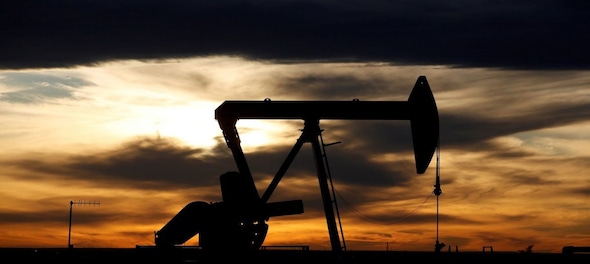
International crude oil prices have surged to their highest levels in 13 months led by a strong demand outlook amid a recovery in global economies and supply disruptions in the Middle East.
Brent crude rose $1.09, or 1.8 percent, to $63.52 a barrel, after climbing to a session high of $63.76, the highest since January 22, 2020. US West Texas Intermediate (WTI) crude futures gained $1.28, or 2.2 percent, to $60.75 a barrel. It touched the highest since January 8 last year of $60.95 earlier in the session.
In the domestic market, crude oil February futures contract rose above Rs 4,400 per barrel level.
Last week, oil prices had gained around 5 percent.
“Oil prices have been rising on the back of a number of improved fundamentals. Hopes of the stimulus package in the US, fears of heightened tensions in the Middle East, demand growth after easing of lockdowns across economies, production cuts from the Organization of the Petroleum Exporting Countries (OPEC) and allied producers in the group OPEC+, among others. The trend in the crude oil will remain positive,” said Ajay Kedia, Director, Kedia Commodities.
The surge in crude oil prices spells bad news for India's state finances, coming at a time when the economy is trying to recover from the disruption caused by COVID.
Ballooning fiscal deficit is a cause of concern given that India is the world’s third-largest oil importer and consumer. Its top suppliers are Saudi Arabia and Iraq.
As per a Reserve Bank of India (RBI) report, every $10/barrel increase in crude prices leads to an additional $12.5 billion deficit, which is roughly 43 bps of India’s GDP. So, every $10/barrel increase in crude price will shoot up the CAD/GDP ratio by 43 bps.
Hence, when crude prices hit $85/barrel, the deficit on account of oil balloons to $106.4 billion, which is 3.61 percent of India’s GDP.

Another impact of the rising crude oil prices is on domestic inflation, through two channels. First, the direct channel where crude products themselves appear as constituents in the CPI. In the short run, a change in prices of crude products will affect the CPI directly due to their weighted contribution in the index.
Second, over time the retail prices of all other commodities manufactured using crude as an input will also increase due to this shock and in turn affect the CPI again, which is the indirect effect.

The RBI mainly factors in the retail inflation while arriving at its monetary policy, has been asked to keep CPI inflation at 4 percent (+,- 2 per cent). In January, retail inflation eased to 4.06 percent from 4.59 percent in December.
Here are the key factors behind the sharp rise in crude oil prices:
Middle East Tensions
The Saudi-led coalition fighting in Yemen said late on Sunday it intercepted and destroyed an explosive-laden drone fired by the Iran-aligned Houthi group toward the kingdom, state TV reported, raising fears of fresh Middle East tensions. The news led to a spike in crude oil prices on fears of supply disruptions.
US Stimulus
The rally in oil prices was also driven by growing hopes of a stimulus package in the US. President Joe Biden pushed for the first major legislative achievement of his term on Friday, turning to a bipartisan group of local officials for help on his $1.9 trillion coronavirus relief plan. The stimulus is expected to bolster economic growth and help millions of unemployed workers.
OPEC Supply Cuts
The production cuts from the Organization of the Petroleum Exporting Countries (OPEC) and allied producers in the group OPEC+ have also helped the oil prices to rise.
Strong Demand Outlook
As the global economies seem to recover from the COVID pandemic and with the opening up of industries across the globe, the demand for crude oil is likely to rise further.
(Edited by : Aditi Gautam)
First Published: Feb 15, 2021 5:47 PM IST
Check out our in-depth Market Coverage, Business News & get real-time Stock Market Updates on CNBC-TV18. Also, Watch our channels CNBC-TV18, CNBC Awaaz and CNBC Bajar Live on-the-go!


Lok Sabha Elections 2024 | How critical is Phase-5 for both NDA and I.N.D.I.A
May 20, 2024 7:30 AM
Lok Sabha Election Phase 5 Voting Live Updates: Leaders, actors among early voters as 49 seats poll today
May 20, 2024 6:34 AM

